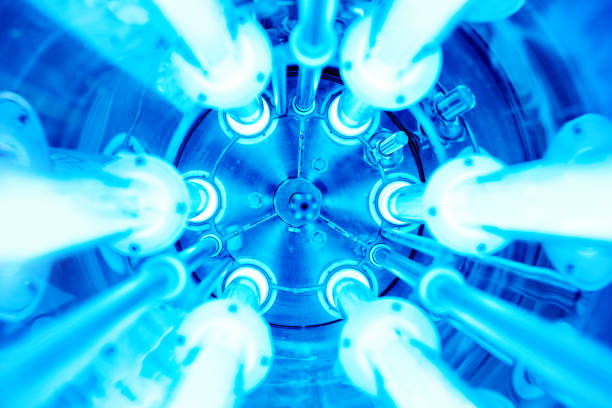Wet Magnetic Particle Testing: Unraveling the Process and Benefits

Unravel the complexities of Wet Magnetic Particle Testing for flaw detection in ferromagnetic materials. Magnetize the test object and apply particles, inspecting for accumulation at defect sites. UV light reveals indications such as cracks and inclusions. Ensure proper surface preparation and follow standardized procedures for accuracy. Detect even the smallest imperfections to uphold quality standards and avoid failures. This method, used in aerospace, automotive, and manufacturing, provides cost-effective and efficient flaw identification. Explore the intricacies of this technique to understand its extensive benefits.
Key Takeaways
– Magnetization concept detects flaws in ferromagnetic materials.
– Compliance with standards ensures accurate testing.
– Enhances product quality and prevents failures.
– Surface preparation crucial for effective testing.
– Certification validates skills and ensures accurate results.
Understanding Wet Magnetic Particle Testing
What’s the fundamental principle behind Wet Magnetic Particle Testing?
Wet Magnetic Particle Testing relies on the concept of magnetization. By applying a magnetic field to a ferromagnetic material, such as steel, any discontinuities or defects present will cause magnetic flux leakage. This leakage is then visualized using magnetic particles suspended in a wet solution, which are attracted to the areas with flux leakage, making the defects visible under proper lighting conditions.
Understanding magnetization is crucial in this process as it determines the detection accuracy of flaws. Proper magnetization ensures that defects are correctly identified and evaluated. Factors such as the strength and direction of the magnetic field, the type of magnetic particles used, and the surface condition of the material all play a role in achieving accurate results.
To enhance detection accuracy, it’s essential to follow standardized procedures and guidelines for Wet Magnetic Particle Testing. By mastering the principles of magnetization and its impact on detection accuracy, technicians can effectively identify flaws in materials, ensuring the integrity and safety of the components being tested.
Importance of Flaw Detection
Ensuring the integrity of components through flaw detection is paramount in maintaining product quality. Detecting flaws early can prevent catastrophic failures, ensuring the safety and reliability of the final product.
Employing rigorous flaw detection methods is crucial for compliance with industry standards and regulations.
Flaw Detection Significance
Detecting flaws is a critical aspect of the wet magnetic particle testing process. It enables the identification of potential defects that could compromise the integrity of the material being inspected. Utilizing flaw detection techniques, such as surface finish analysis, allows for a thorough examination of the component surfaces to uncover even the most imperceptible flaws.
When employing flaw detection tools for material composition analysis, the precise identification of defects becomes possible, ensuring the quality and reliability of the inspected materials. By emphasizing flaw detection significance, the testing process gains an essential layer of reliability, guaranteeing that components meet stringent quality standards and minimizing the risk of structural failures.
Prioritizing flaw detection is paramount in upholding the integrity and safety of materials and products.
Ensuring Product Quality
To maintain the high standard of product quality, a meticulous focus on flaw detection remains imperative in the wet magnetic particle testing process. Ensuring product durability through effective quality assurance procedures is paramount.
Flaw detection allows for the identification of even the smallest imperfections in materials, ensuring that only products meeting stringent quality standards are released to the market. By utilizing wet magnetic particle testing, manufacturers can confidently assess the integrity of their products, enhancing overall quality control measures.
Detecting flaws early on prevents potential product failures, increasing customer satisfaction and trust in the brand. The meticulous attention to detail in flaw detection not only safeguards product quality but also upholds the reputation of the company as a provider of reliable and durable products.
Magnetic Particle Application Process
During the magnetic particle application process, the inspection surface is carefully prepared to ensure effective testing. Surface preparation techniques play a crucial role in enhancing magnetic particle sensitivity. Before applying the particles, it’s essential to clean the surface thoroughly to remove any contaminants that could interfere with the inspection. This can be achieved through methods such as solvent cleaning, degreasing, or abrasive blasting. The surface should also be dried completely to prevent any moisture from affecting the test results.
Once the surface is prepared, the magnetic particles are applied in a wet suspension or dry form. The application process should be done meticulously to ensure uniform coverage over the entire area being inspected. Magnetic particle sensitivity is greatly influenced by the proper application technique. By following the recommended procedures and guidelines for applying the particles, you can maximize the chances of detecting any defects or discontinuities present on the surface. Remember, the quality of the surface preparation and particle application directly impacts the reliability of the magnetic particle testing results.
Magnetization Techniques Used
When magnetizing components for wet magnetic particle testing, two main techniques are commonly used: the Coil Magnetization Method and the Yoke Magnetization Technique.
These methods involve applying magnetic fields to the test material to reveal surface and near-surface defects efficiently.
The choice between these techniques depends on factors such as the shape and size of the component being tested.
Coil Magnetization Method
Employing the coil magnetization method in wet magnetic particle testing enhances the efficiency and accuracy of detecting surface and near-surface defects in ferromagnetic materials. This technique involves passing an electric current through a coil to generate a magnetic field.
The coil’s configuration influences the distribution and strength of the magnetic field, crucial for achieving optimal results in flaw detection. By carefully controlling the current and coil design, technicians can tailor the magnetic field to suit specific testing requirements, ensuring thorough coverage of the test piece.
The coil magnetization method is particularly effective in revealing defects that lie close to the surface, making it a valuable tool in non-destructive testing for industries where precision and reliability are paramount.
Yoke Magnetization Technique
Utilizing the yoke magnetization technique in wet magnetic particle testing involves strategically positioning a magnetic yoke to induce a magnetic field in ferromagnetic materials for defect detection. This technique is widely used in non-destructive testing (NDT) techniques due to its effectiveness in revealing surface and near-surface flaws in components.
By creating a magnetic field through the yoke, any discontinuities present in the material cause magnetic flux leakage, which can then be visualized using magnetic particles. The yoke magnetization method is particularly useful for inspecting welds, castings, and forgings in various industries such as aerospace, automotive, and manufacturing.
Understanding the principles behind yoke magnetization enhances the capability to detect flaws accurately in critical components, ensuring the integrity and safety of the inspected materials.
Inspection Under UV Light
To enhance defect visibility during the inspection process, utilizing ultraviolet (UV) light is a crucial step in wet magnetic particle testing. When conducting UV light inspection, the fluorescent indications become more pronounced, aiding in the detection of even the smallest defects. To ensure optimal results, surface cleanliness is paramount as any contaminants could mask defects and reduce the test sensitivity.
Here are some key points to consider during inspection under UV light:
– Proper Lighting Conditions: Ensure the UV light source is suitable for the testing environment.
– Correct Angles and Distance: Position the UV light at the appropriate angle and distance to maximize defect visibility.
– Regular Calibration: Regularly calibrate the UV light source to maintain accurate inspection results.
– Safety Precautions: Wear appropriate personal protective equipment such as UV-blocking glasses to protect your eyes from prolonged UV exposure.
Following these guidelines will help you conduct effective wet magnetic particle testing under UV light, enhancing defect detection and ensuring the integrity of the inspected components.
Advantages Over Other NDT Methods
Enhancing defect visibility through UV light inspection in wet magnetic particle testing offers distinct advantages over other non-destructive testing (NDT) methods. Wet magnetic particle testing stands out due to its cost-effectiveness and efficiency compared to various NDT techniques. The process involves minimal setup time and equipment, resulting in lower overall costs. This makes it an attractive option for industries looking to maximize their inspection budget without compromising accuracy.
In terms of sensitivity and accuracy, wet magnetic particle testing excels in identifying surface-breaking and shallow subsurface defects. The method’s ability to detect minute imperfections ensures reliable results, especially in safety-critical applications where precision is paramount. Unlike some other NDT methods that may overlook smaller defects, wet magnetic particle testing provides a comprehensive inspection approach that leaves no room for oversight.
Detecting Hidden Defects
Detecting hidden defects requires a meticulous and systematic approach to ensure thorough inspection and accurate results. To effectively uncover these imperfections, consider the following key strategies:
– Utilize Advanced Techniques: Employ cutting-edge methods for defect localization and flaw identification, enhancing the precision of the inspection process.
– Thorough Surface Preparation: Ensure the surface is meticulously cleaned and prepared to optimize the visibility of defects during testing.
– Proper Magnetization: Apply the appropriate magnetic field to the component under inspection to facilitate defect detection and localization.
– Skilled Inspection Personnel: Entrust the inspection to trained professionals who possess the expertise to interpret results accurately and identify even the most subtle flaws.
Enhancing Component Safety
You must implement safety measures to enhance component safety and reduce risks.
By employing risk reduction strategies, you can mitigate potential hazards and ensure the reliability of your components.
Taking proactive steps will help maintain the integrity of your equipment and prevent catastrophic failures.
Safety Measures Implemented
Implementing rigorous safety measures is essential for enhancing the safety of components during the wet magnetic particle testing process. To ensure workplace safety and proper equipment maintenance, consider the following:
– Personal Protective Equipment (PPE): Always wear the required PPE, including gloves, safety goggles, and lab coats.
– Equipment Inspection: Regularly inspect testing equipment for any signs of damage or wear to prevent malfunctions.
– Ventilation: Work in well-ventilated areas to avoid inhaling fumes or particles released during the testing process.
– Emergency Procedures: Familiarize yourself with emergency protocols in case of accidents or spills to react promptly and minimize risks.
Risk Reduction Strategies
To enhance the safety of components during the wet magnetic particle testing process, focus on implementing effective risk reduction strategies. Utilizing risk mitigation techniques and stringent safety protocols is crucial in minimizing potential hazards.
Quality assurance plays a vital role in maintaining the integrity of the testing process, ensuring accurate results while safeguarding against errors. By emphasizing defect prevention through meticulous inspection procedures and adherence to industry standards, you can significantly reduce the likelihood of component failures.
Incorporating comprehensive safety measures not only protects personnel and equipment but also enhances the reliability of the testing outcomes. Prioritizing risk reduction strategies demonstrates a commitment to operational excellence and fosters a culture of safety within the testing environment.
Industry Applications of WMT
In various industrial sectors, Wet Magnetic Particle Testing (WMT) is an indispensable method for detecting surface and near-surface defects efficiently. Industries rely on WMT for various applications due to its accuracy and reliability in identifying flaws.
Here are some key industry applications of WMT:
– Aerospace: Ensuring the structural integrity of critical components in aircraft engines.
– Automotive: Detecting imperfections in engine parts for optimal performance and safety.
– Manufacturing: Verifying the quality of welds in fabricated metal products.
– Railway: Inspecting train wheels and tracks to maintain operational safety standards.
Standards and Regulations Compliance
For industries utilizing Wet Magnetic Particle Testing (WMT), ensuring compliance with standards and regulations is paramount to maintaining operational integrity and safety. Regulatory compliance in WMT is guided by industry standards such as ASTM E1444 and ASME Boiler and Pressure Vessel Code Section V. These standards outline the proper procedures, equipment requirements, and personnel qualifications necessary for conducting effective WMT inspections.
Adhering to these regulations not only ensures the reliability and accuracy of the testing process but also guarantees the safety of personnel involved in the testing operations. By following industry standards, companies can establish a consistent and reliable testing protocol that meets the required quality assurance benchmarks.
Additionally, regulatory compliance helps in avoiding costly fines, legal issues, and reputational damage that may arise from non-compliance. Therefore, it’s essential for organizations using WMT to stay updated with the latest regulatory requirements and industry standards to uphold the highest levels of quality and safety in their testing procedures.
Equipment and Materials Needed
A comprehensive array of specialized equipment and high-quality materials is essential for conducting Wet Magnetic Particle Testing effectively and accurately. To ensure the success of your testing process, here are some key points to consider:
– Equipment Maintenance: Regular maintenance of testing equipment such as yokes, power sources, and magnetic particle baths is crucial to guarantee accurate and reliable results.
– Safety Precautions: Prioritize safety by using personal protective equipment like gloves, goggles, and aprons to prevent any harm during the testing process.
– Process Optimization: Fine-tune your testing procedures to enhance efficiency and effectiveness, leading to better detection of defects in the material being tested.
– Material Compatibility: Utilize magnetic particles and carrier fluids that are compatible with the material under inspection to achieve optimal results without causing damage or interference.
Training and Certification Requirements
To ensure proficiency in conducting Wet Magnetic Particle Testing, acquiring the necessary training and certification is imperative for personnel involved in the testing process. The certification process typically involves completing a training program that covers the principles of magnetic particle testing, equipment operation, test procedures, and safety protocols. Training requirements may include both theoretical classroom sessions and hands-on practical experience under the supervision of qualified instructors.
Certification in Wet Magnetic Particle Testing demonstrates competence and understanding of the testing techniques and standards. It ensures that individuals are capable of performing tests accurately and interpreting results effectively. Additionally, certification provides a level of assurance to employers and clients regarding the skills and knowledge of the personnel conducting the tests.
Training programs for Wet Magnetic Particle Testing certification are offered by various organizations and institutions specializing in non-destructive testing. These programs often culminate in a certification exam that assesses the individual’s understanding of the testing methods and procedures. Maintaining certification may require periodic renewal through continuing education or re-examination to ensure ongoing competency in Wet Magnetic Particle Testing.
Conclusion
In conclusion, wet magnetic particle testing is a crucial method for flaw detection in various industries. By utilizing magnetization techniques and inspection under UV light, this process ensures the identification of defects that could compromise the integrity of materials.
Compliance with standards and regulations, along with proper training and certification, is essential for conducting accurate and reliable testing.
Overall, wet magnetic particle testing offers numerous benefits in enhancing the safety and quality of materials used in industrial applications.
Apart from that, if you are interested to know about How to Check PF balance by missed call then visit our Business category.




